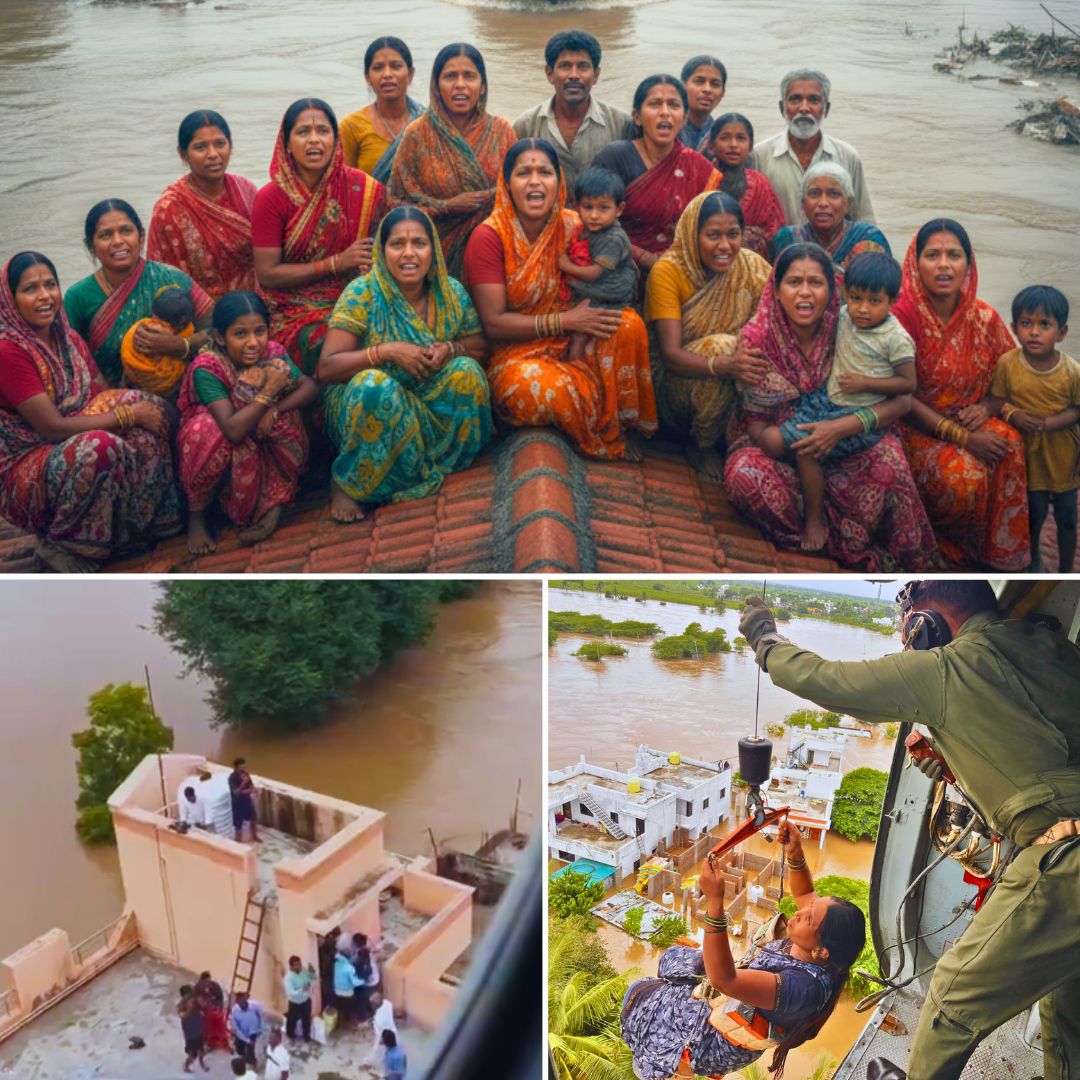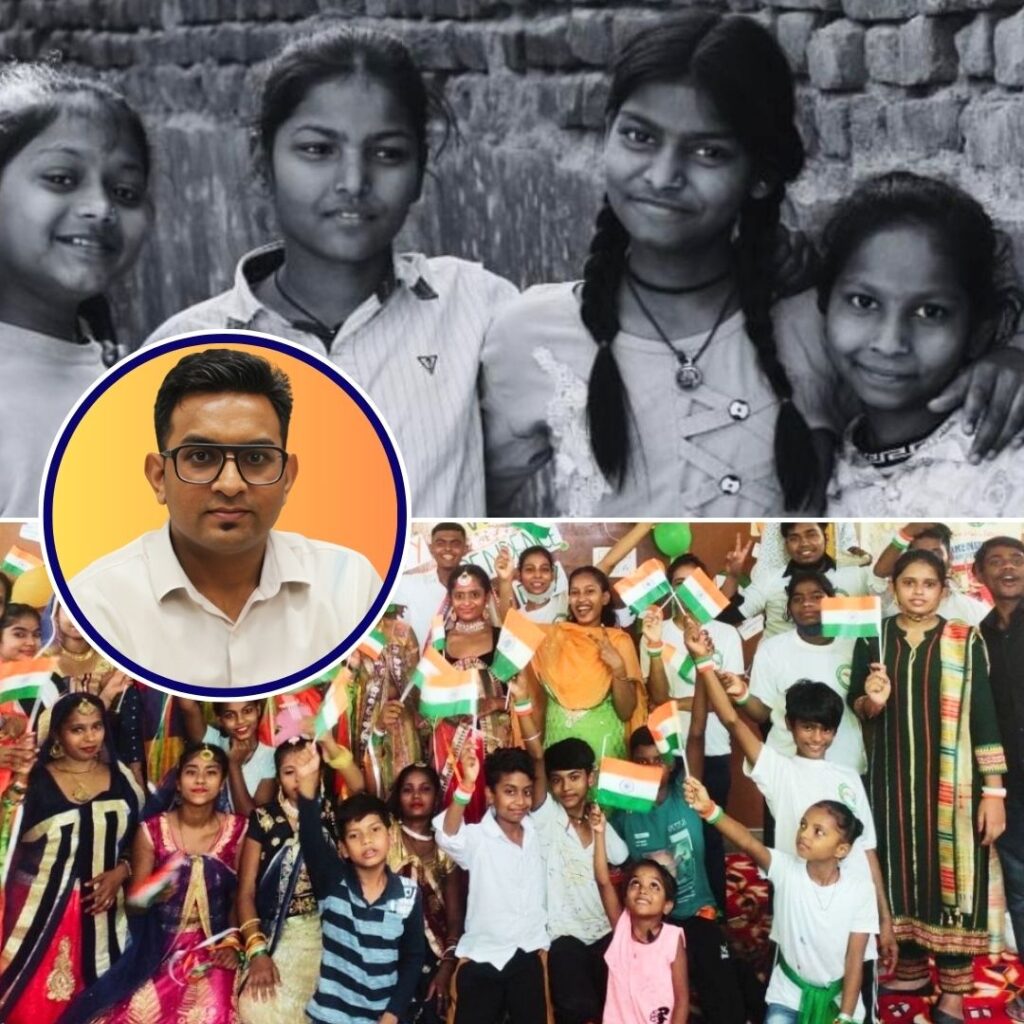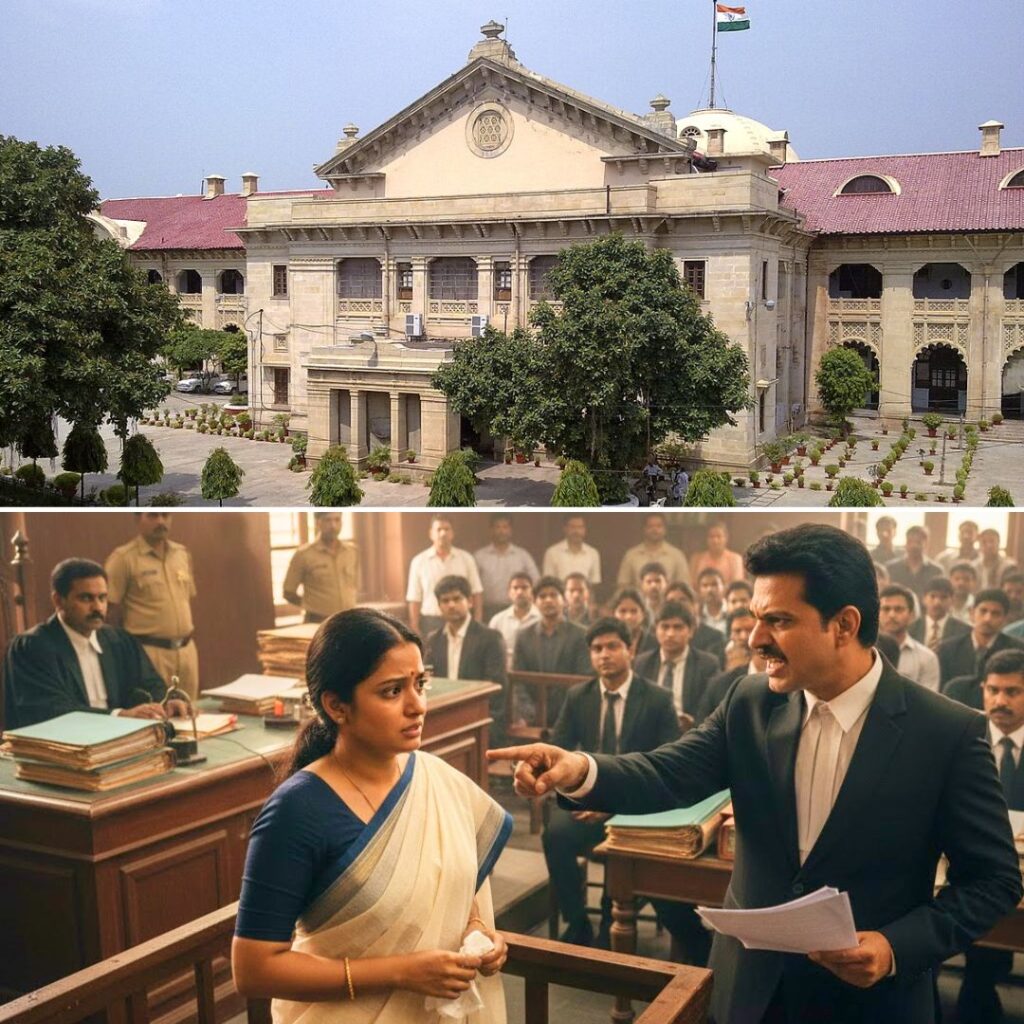The flood crisis in Shindkheda village, located in Solapur district of Maharashtra, has intensified following heavy monsoon rains that caused the Sina River to swell dangerously above its banks. Over 1,500 people remain stranded as floodwaters have completely surrounded the village, cutting off all road access.
The Solapur district administration, supported by disaster management agencies and the Indian Army, is engaged in large-scale rescue and relief operations to evacuate trapped residents and provide emergency aid. Officials have reported that more than 600 people have been safely rescued so far, but many families, including elderly individuals, women, children, and those with chronic illnesses, remain on rooftops awaiting help. Efforts also include air-dropping food, water, and essential supplies to the most inaccessible locations.
The Solapur–Vijayapura National Highway remains closed, causing severe disruptions to daily life and transportation in the region.
Rescue Efforts and Challenges on the Ground
The rescue mission in Shindkheda is being coordinated by a dedicated team from the district administration in collaboration with the Indian Army and local volunteers. The RESQ Charitable Trust-Sahyadri Vanyajeev Rakshanarth Samajik Sanstha (SVRSS) has played a significant role alongside government teams during these efforts. According to a district disaster officer, priority is being given to evacuating the most vulnerable, with night-time rescues having saved citizens from life-threatening conditions.
In addition to human rescue, about 90 animals, including cows, buffaloes, and dogs, were evacuated with veterinary support, although hundreds of livestock tragically perished. Residents have described the scene as terrifying, with floodwaters rising two to three feet inside many homes, leading to health risks and emotional trauma.
The authorities have faced considerable difficulty due to cut-off roadways and high water levels, but continue intensive efforts to bring relief to all affected.
Severe Impact on Agriculture and Livelihoods
The flooding is part of an ongoing pattern of heavy monsoon rains that have hit Solapur and neighbouring districts hard this season. Over the past week, torrential rains caused widespread damage across Maharashtra, with Solapur among the worst-hit areas.
The state government has recorded crop damage spread over 9.95 lakh acres in Solapur district alone, with soybean, cotton, maize, and other crops severely affected. Chief Minister Devendra Fadnavis visited flood-affected villages and announced that drone imagery would be used as official evidence for crop loss assessments and compensation. Farmers have faced mounting financial hardship, intensifying after similar flood-induced losses in previous seasons.
Due to the severity of the situation, the state has announced a substantial compensation package of Rs 2,215 crore to assist approximately 31.64 lakh farmers across Maharashtra. Despite relief measures, reports have emerged of farmer distress, including suicides linked to crop loss, underscoring the urgent need for holistic support systems in the region’s agriculture sector.
The Logical Indian’s Perspective
The tragedy unfolding in Shindkheda village is a stark reminder of the vulnerability many rural communities face amid changing climatic patterns amplified by insufficient infrastructure and preparedness. While rescue operations demonstrate courage and community spirit, the cycle of recurrent flooding highlights a critical gap in sustainable planning and disaster resilience.
The Logical Indian stresses the importance of coupling immediate relief with long-term strategies that prioritise climate adaptation, better flood management, and inclusive governance rooted in empathy for affected populations. It is imperative that authorities and citizens together foster open, constructive dialogues focused on resilient development and social harmony.












